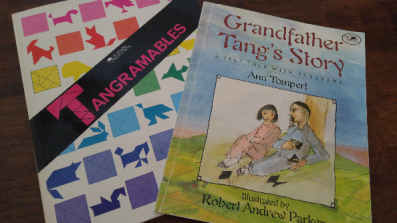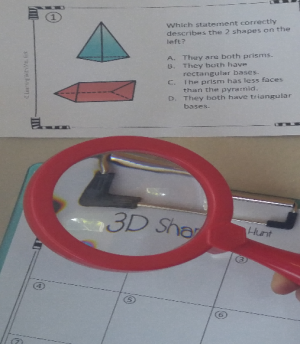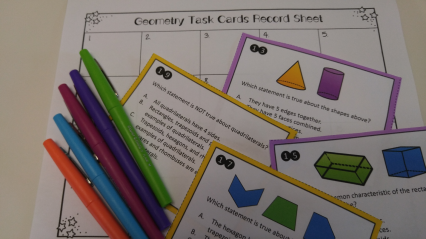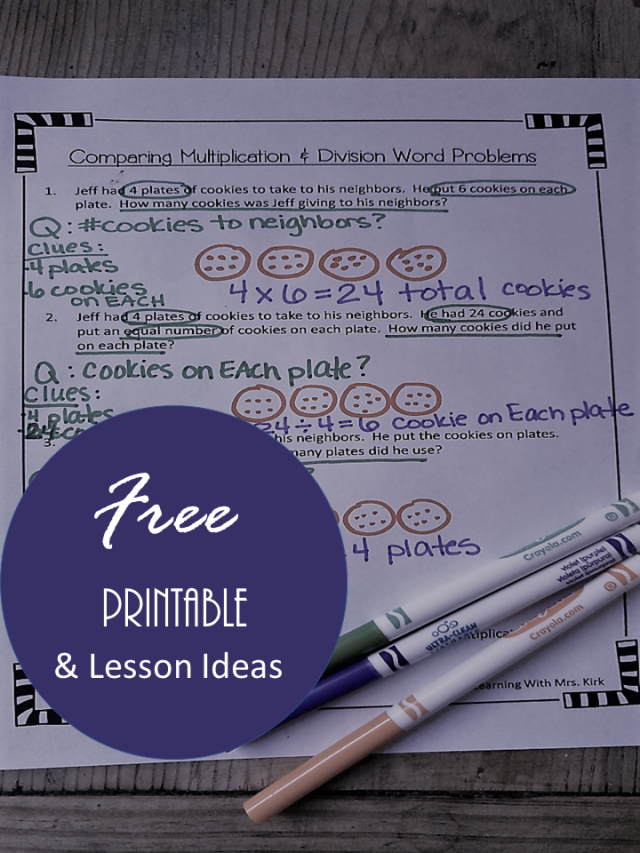Geometry is one of my favorite units to teach! Maybe it is because I like to quilt so the patterns and shapes are fun for me! Maybe it is because there are so many hands on activities for my students! Some of my favorite activities for centers and/or workstations (math workshop) are:
1. Tangrams:

I love to give my students tangrams and let them explore spatial relationships while building patterns and recreating patterns from books like “Grandfather Tang” and “Tangramables”. If you are lucky enough to have plastic sets of tangrams you can set them up in a center with the books and let your children explore with the shapes. If you need to make your own tangrams, you can download a free pattern here. Print on card stock and cut out. You can also find some cute cards for using tangrams here.
2. Make 3D Shapes:
Head over to Teaching Ideas For Those Who Love Teaching to See step by step how to make these awesome 3D Shapes with Marshmallows and Toothpicks! Yum!
Or … If you prefer paper shapes, Math Geek Mama has Free Printables to make your own shapes!
3. Geometry Scavenger Hunt:

Kids need to get out of their seat and move around! One of your best centers can be the scavenger hunt. Place questions around the room and give your students a record sheet to use while they work. For directions to make your own, see this post: Making A Scavenger Hunt. Or to use premade, print and go resources click here: Scavenger Hunt 1, or here Scavenger Hunt 2.
4. Task Cards:
These task cards are great for starting higher level discussions with your students. Students work together to answer questions identifying, comparing and analyzing critical attributes of 2 and 3 d shapes.
5. Technology:
Hopefully you have a few computers in your classroom you can use for a station. Here are two good websites for Geometry:

















